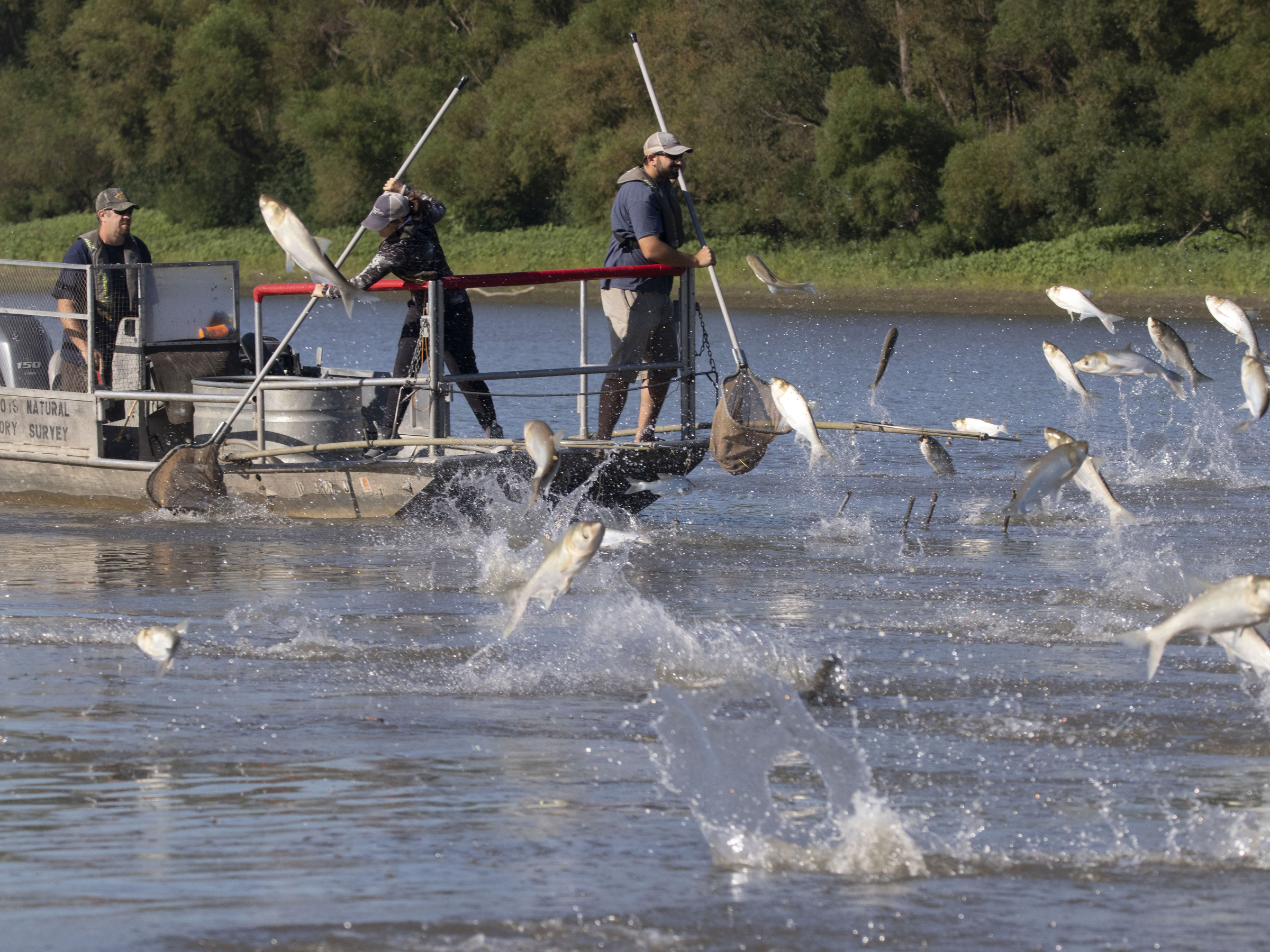A silver carp found 9 miles from Lake Michigan in June somehow made it past three electric barriers designed to prevent the fish from spreading into the Great Lakes. Despite the finding, state and federal officials say the barriers are an effective tool to ward off Asian carp.
Local, state and federal officials are trying to prevent the spread of the invasive Asian carp into the Great Lakes in order to protect native fish species. Autopsy findings released Friday show the 4-year old silver carp came from the lower or middle Illinois River systems.
Charlie Wooley, deputy regional director for the U.S. Fish and Wildlife Service, said that’s far below the U.S. Army Corps of Engineers’ electric barriers. Wooley said it’s possible the fish swam past the barriers, but unlikely.
Stay informed on the latest news
Sign up for WPR’s email newsletter.
“We have not seen that kind of activity with the surrogate fish that we looked at at the barrier in the past,” he said. “But, obviously, somehow, it got from the Middle Illinois River system and was captured up by T.J. O’Brien Lock and Dam just 9 miles from Lake Michigan.”
Kevin Irons, aquatic nuisance species program manager with the Illinois Department of Natural Resources, said it’s unclear how the fish got past the three barriers. Irons said research has shown the barriers are very effective in warding off larger fish like the 8-pound carp.
“We would expect a fish like this to be very susceptible to electric barriers,” Irons said. “It either swam or it was moved there would be the two extents. We really don’t have any insight to what happened between those locations.”
Two of the three electric barriers have a higher power capability that sends 2.3 volts per inch into the water and 34 pulses per second. The original barrier is smaller and lower power and can’t go up to that level, said Chuck Shea, project manager for the Chicago Sanitary and Ship Canal electric barriers with the U.S. Army Corps of Engineers.
“Those settings deter fish down to approximately 2.5 to 5 inches in size and that varies depending on water temperature,” Shea said.
The silver carp found in the Little Calumet River was 28 inches long. Shea said lab results and field testing have shown the electric barriers are “highly effective” in repelling Asian carp.
Environmental groups argue the autopsy findings prove more barriers are necessary to prevent the spread of Asian carp.
“The live silver carp that was found just 9 miles from Lake Michigan this past June likely made its way through the electrical deterrents, confirming that our current defenses are not strong enough to prevent Asian carp from swimming into Lake Michigan,” said Marc Smith with the National Wildlife Federation in a prepared statement. “We need additional defenses against Asian carp implemented as soon as possible, including those recommended in the Army Corps of Engineers plan for Brandon Road.”
The recently released Brandon Road study recommends installing a combination of technologies at the lock and dam. The proposed deterrents include an electric barrier, water jets, complex noise and a flushing lock to increase success with preventing the invasive fish from spreading into the Great Lakes, said Jeff Zuercher, program manager with the Army Corps’ Chicago District.
“The fact that we would have Brandon Road and the current electric barriers in place gives us two control points that helps us increase our confidence that we are able to deter these fish,” he said. “It helps reduce the risk of any fish getting through.”
The study reports the barriers would cost around $275 million to construct with the Army Corps footing most of the bill. If approved, construction could be completed by 2025. But, the agency also noted there’s no guarantee the invasive fish wouldn’t be transported into the Great Lakes by some other means, such as boaters or fishermen.
Wooley with the U.S. Fish and Wildlife Service said the agencies will do intensive sampling above the electric barriers next month to monitor for the invasive carp.
Wisconsin Public Radio, © Copyright 2024, Board of Regents of the University of Wisconsin System and Wisconsin Educational Communications Board.




